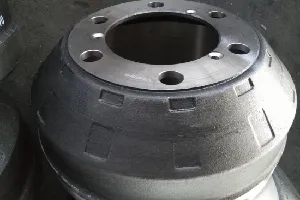Understanding Brake Systems and Drum Construction for Vehicle Safety and Performance
Understanding Brakes and Drums Essential Components of Vehicle Safety
When it comes to vehicle safety, few systems are as crucial as the braking system. Among the various components that make up this system, brakes and drums play an integral role in ensuring that vehicles can stop effectively and safely. This article aims to demystify these essential components, providing an overview of how they work, their importance, and tips for maintaining them.
The Basics of Braking Systems
At its core, the braking system of a vehicle is designed to reduce its speed or bring it to a complete stop. While there are various types of braking systems, the most common in vehicles today are disc brakes and drum brakes. Each has its own mechanism, advantages, and disadvantages.
Disc Brakes These consist of a flat, circular disc (the rotor) attached to the wheel, along with calipers that contain brake pads. When the driver presses the brake pedal, hydraulic pressure forces the brake pads to clamp down on the rotor, generating friction that slows the wheel.
Drum Brakes In contrast, drum brakes use a cylindrical drum mounted to the wheel. Inside the drum, brake shoes made of friction material press against the inner surface of the drum when the brakes are applied. This generates the necessary friction to slow the vehicle.
How Drum Brakes Work
Drum brakes are less common in modern vehicles but are still widely used, especially in older models and in certain applications like trucks and buses due to their ability to generate strong braking force. When the brake pedal is pressed, hydraulic fluid forces the brake shoes outward against the drum's interior. The friction created between the shoes and the drum slows the vehicle down.
One of the advantages of drum brakes is their design, which can accommodate a self-energizing effect. This means that as the drum rotates, the shoes can actually pull themselves tighter against the drum, enhancing braking performance. However, this self-energizing feature can also lead to increased wear and tear over time, necessitating regular maintenance.
Importance of Brake Maintenance
brakes and drums

Maintaining brakes and drums is crucial for vehicle safety. Over time, the components can wear down due to heat, friction, and environmental factors. If neglected, worn brakes can lead to decreased stopping power and increased stopping distances, heightening the risk of accidents.
Signs of Wear It's important for drivers to be aware of signs that indicate their braking system may need attention. Common indicators include a squeaking or grinding noise when the brakes are applied, a soft or spongy brake pedal, and vehicle pulling to one side during braking. These issues should prompt an immediate inspection by a qualified mechanic.
Maintenance Tips
1. Regular Inspections Have your brakes checked regularly, ideally every 6,000 miles or as recommended by the vehicle manufacturer. A qualified technician can assess the condition of the drums, shoes, and other components.
2. Replace Brake Pads and Shoes Brake pads and shoes should be replaced before they wear down completely. Ignoring this can lead to damage to the drums or rotors, resulting in more expensive repairs.
3. Brake Fluid Check The brake fluid should be checked and replaced according to the manufacturer's schedule. Dirty or low brake fluid can affect braking performance.
4. Listen for Noises Pay attention to any unusual sounds when braking. Squeaking often indicates worn pads, while grinding can signify that the pads are completely worn down and damage to the drums may occur.
5. Brake Drum Inspection If your vehicle is equipped with drum brakes, ensure that the drums are inspected for warping or scoring. Any significant damage should be addressed immediately.
Conclusion
Brakes and drums are vital components of a vehicle's safety system. Understanding how they work and recognizing the importance of maintenance can help ensure that drivers stay safe on the road. By being proactive about brake inspections and repairs, drivers can enhance their safety and the longevity of their vehicles. Remember, effective braking is not just about stopping quickly; it is about ensuring that every stop is safe, reliable, and controlled. So, pay attention to your braking system to keep yourself and others safe while on the road.
-
The Power and Reliability of Brake DrumsNotíciesAug.27,2025
-
The High-Quality Truck Brake DrumsNotíciesAug.27,2025
-
Quality Brake Drums for Reliable PerformanceNotíciesAug.27,2025
-
Get the Quality Semi Trailer Brake Drums for Your FleetNotíciesAug.27,2025
-
Everything You Need to Know About Brake DrumsNotíciesAug.27,2025
-
Enhance Your Vehicle's Performance with Reliable Brake DrumsNotíciesAug.27,2025
-
Truck Drum Brake Spring Replacement ProcedureNotíciesAug.22,2025


